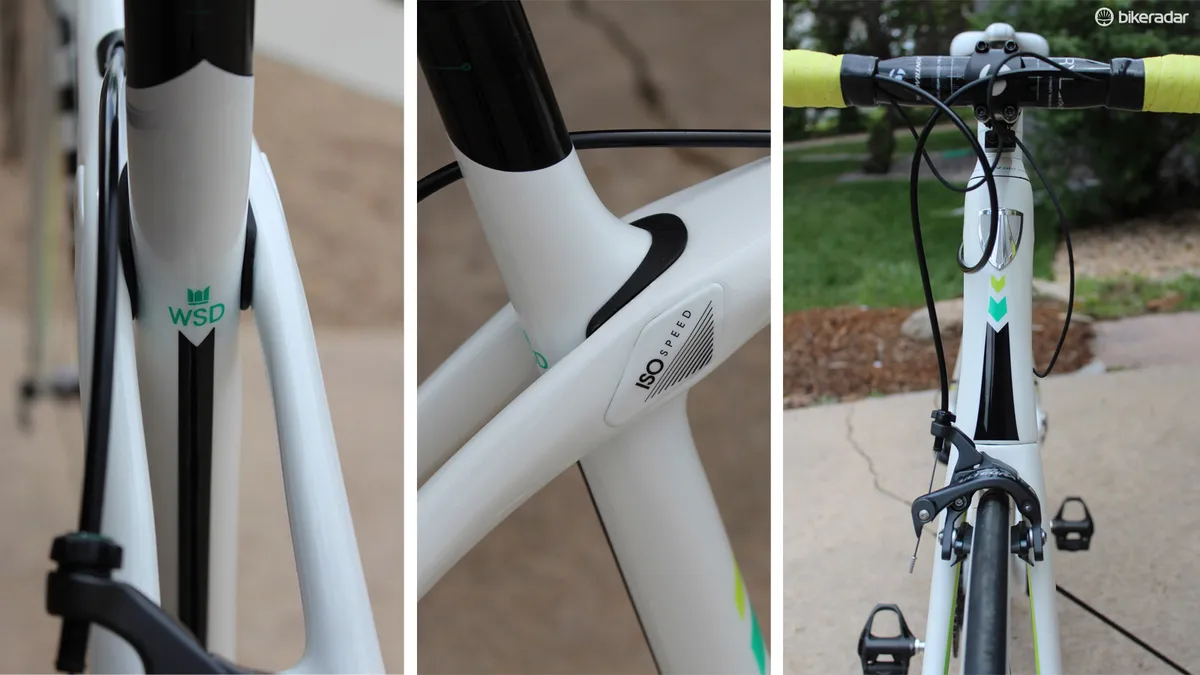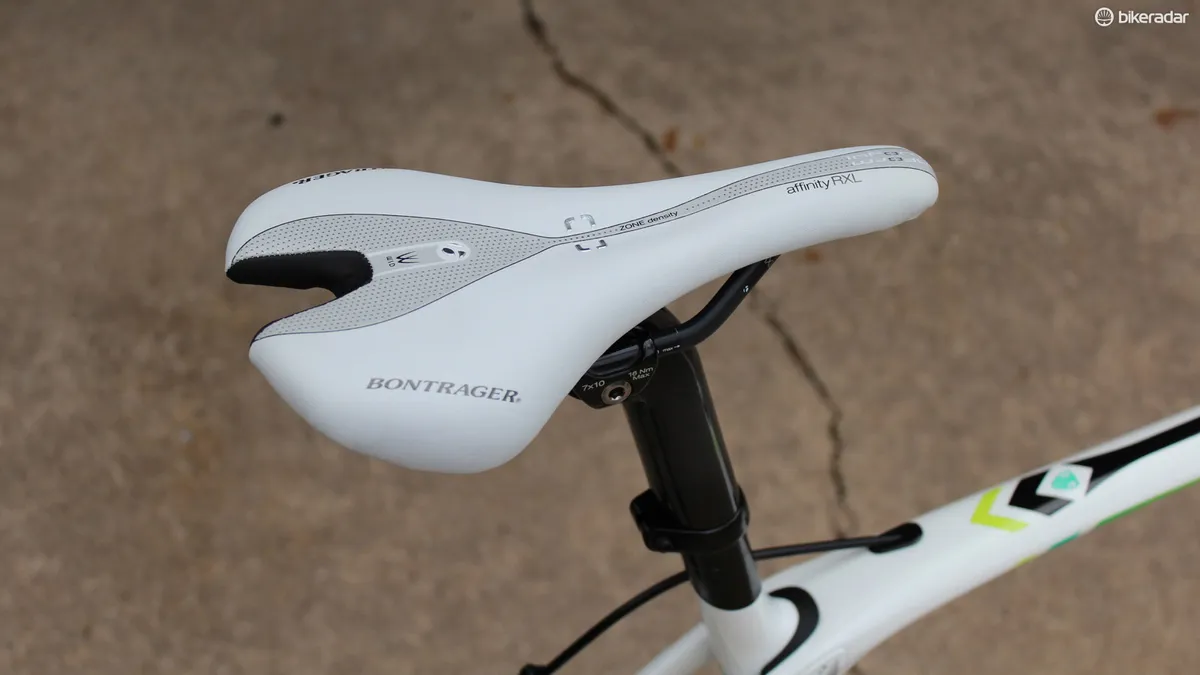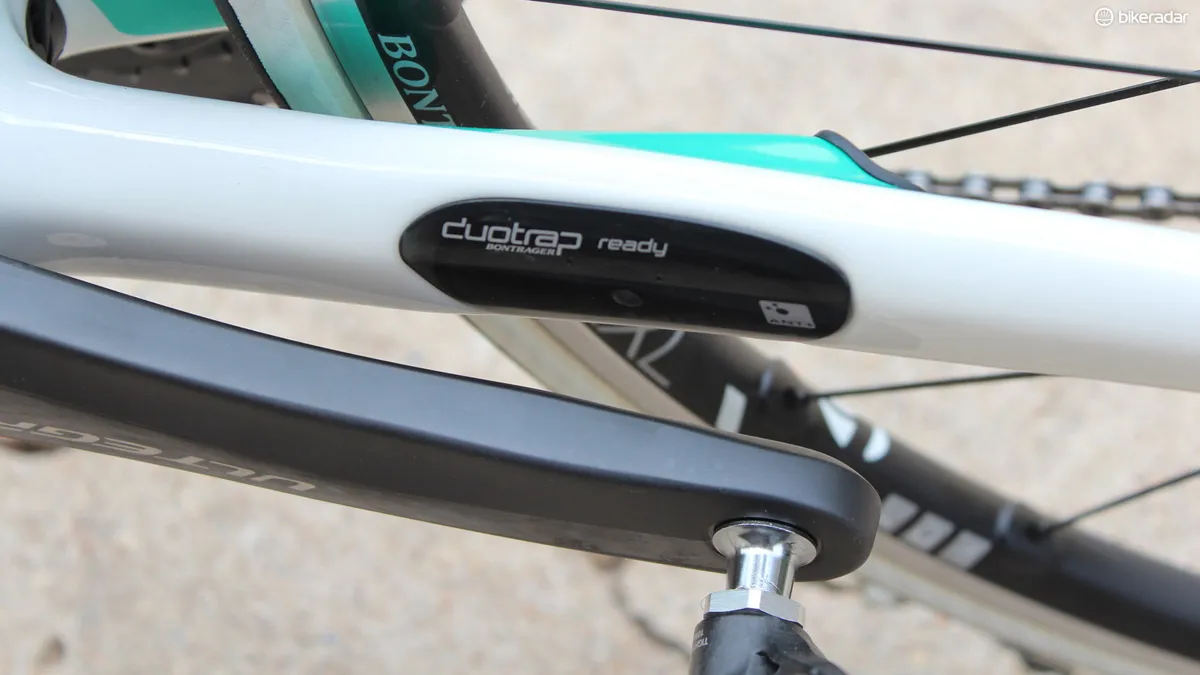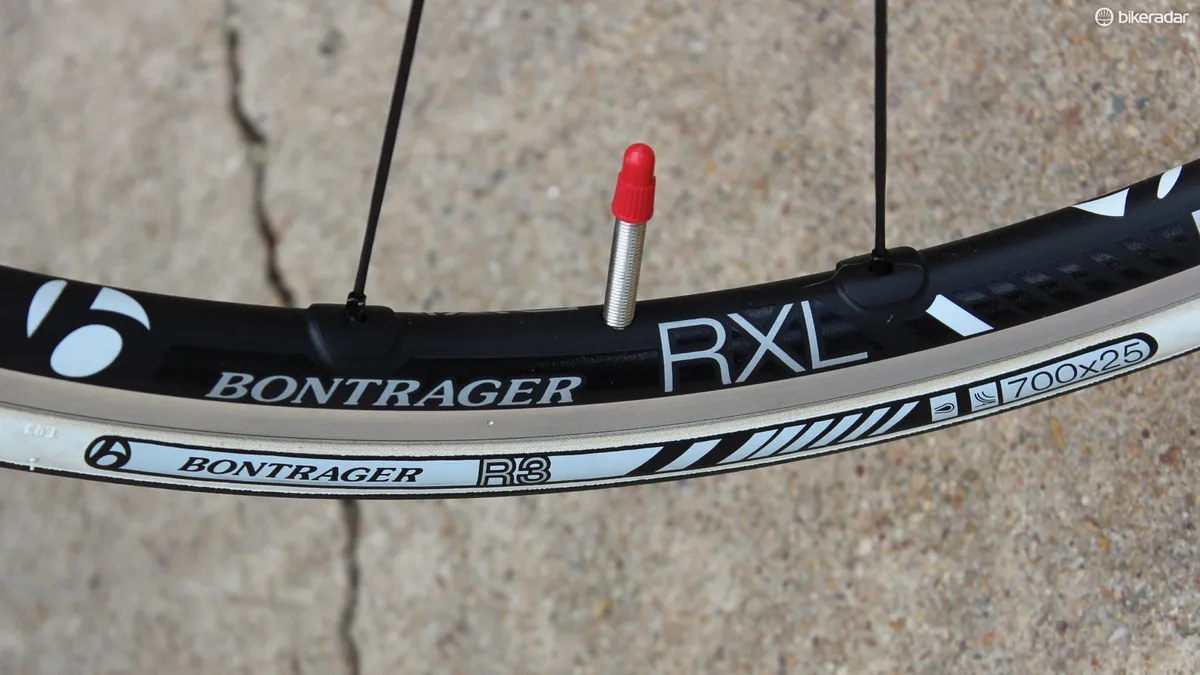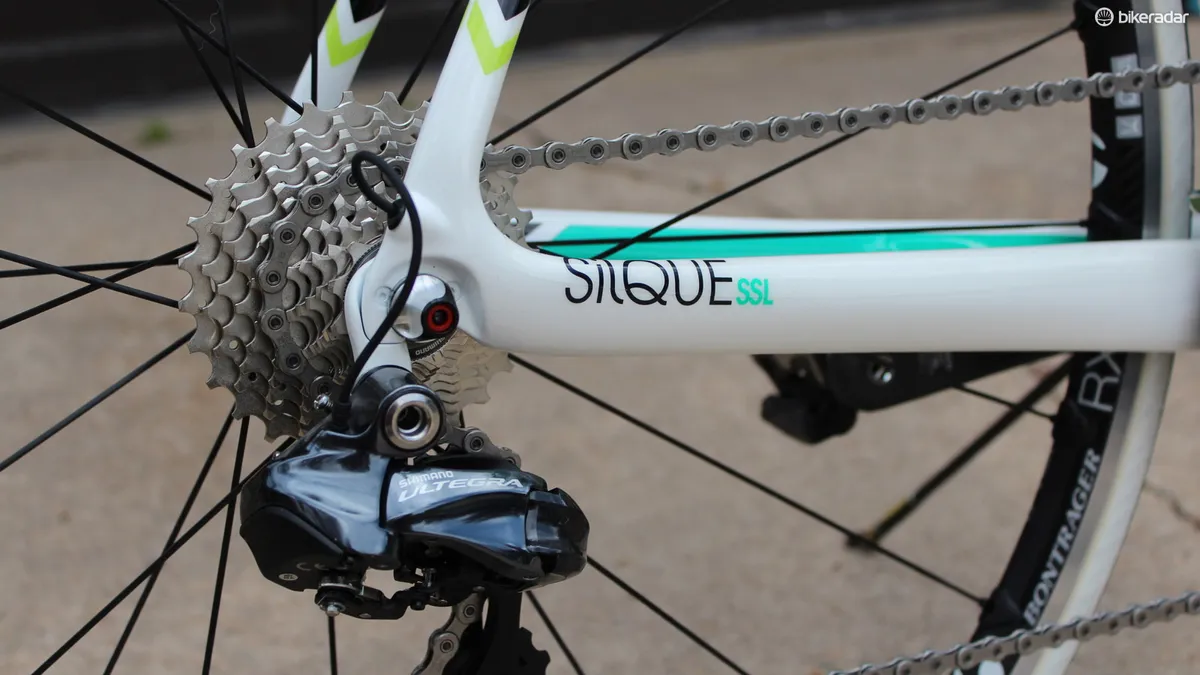Trek recently launched a new women’s bike, the Silque, which the company claims offers the best of racing and endurance characteristics. Long dirt ride? No problem. Racing performance? Got you covered. The Silque borrows ideas and details from Trek's successful men’s bikes and uses new geometry and new engineering that Trek says better suit female riders.
Included on the Silque is Trek’s IsoSpeed 'decoupler' from Trek's Domane endurance road bike. This decoupler acts as a tiny built-in suspension system that allows the seat tube to flex slightly without compromising the rest of the bike’s stability and stiffness.
We recently got a test bike in, which weighs 7.34kg / 16.18lb in the 56cm size.
While developing the women’s design, Trek found that women and men of the same size generally have different power outputs and weights. While this may not seem like groundbreaking information, the Silque engineers put their data to use creating unique carbon layups to optimize tube sizes and shapes specifically tuned to women at each frame size.
With endurance features like the IsoSpeed decoupler, a taller stack, and longer wheelbase, Trek’s women-specific Silque looks ready for any long ride adventure. But with a geometry that places it somewhere between the performance Madone line and the Domane endurance line, where does it belong? Will the Silque be the best of both endurance and performance bikes? Or will it leave riders pedaling through a gray zone, wishing for more performance or more endurance. Stay tuned for an in-depth review after time and miles are spent on Trek’s new Silque.
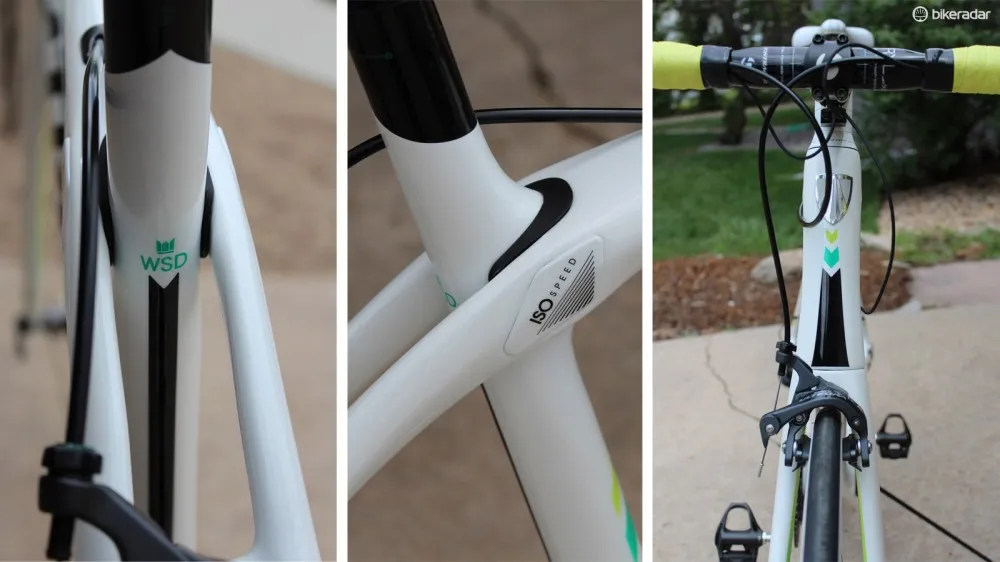
An IsoSpeed decopuler at the back paired with a tall head tube up front, tied together with Trek's WSD geometry

